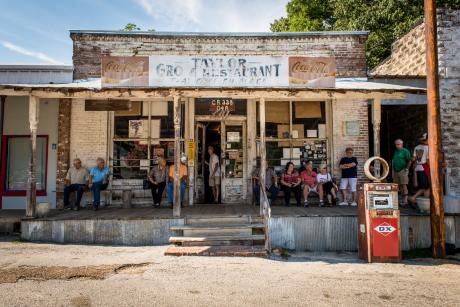Abstract
There are numerous federal housing assistance programs, but together they fall far short of meeting the affordable housing needs of older adults with low incomes. This article describes major federal housing assistance programs and the current need for housing assistance for older adults. The article also points to three solutions: an entitlement for housing assistance for older adults with low incomes, significant expansion of affordable homes, and financing of services for older adults within affordable housing communities.
Key Words
affordable housing, rental assistance, Section 202, HUD, housing credit, homelessness
It is no surprise that there is an affordable housing crisis in America. What some people may not realize, however, is the degree to which older adults are affected by this situation. In 2017, 9.6 million households ages 65 and above—almost one-third in this age group—were housing cost-burdened, meaning they spent more than 30 percent of their incomes for housing. About 4.8 million were severely burdened, paying at least half their incomes for housing (Joint Center for Housing Studies of Harvard University [JCHS], 2019).
Because the majority of older adults own their homes, homeowners make up the bulk of this cost-burdened group. But a larger share of renters ages 65 and older are cost-burdened—54 percent of older renters compared to 26 percent of homeowners (JCHS, 2019). This is not unexpected, given that renters tend to have lower incomes than homeowners. Among households of people ages 65 and older, the median income in 2018 for homeowners was $51,300, compared to $23,600 for renters (U.S. Census Bureau, 2018).
Several factors contribute to a lack of affordable housing, including a declining availability of low-rent units. The number of units renting for less than $800 has fallen every year since 2011, leading to a total net decline of almost 20 percent in this category (JCHS, 2020). In addition, the share of new apartments that are affordable to median-income households has dropped to less than 3 percent annually over the last decade (JCHS, 2020). So, the number is even less for lower income households.
Many older adults rely on Social Security as their dominant source of income. Seventy percent of unmarried persons receive 50 percent or more of their income and almost half (45 percent) receive 90 percent or more of their income from Social Security. In March 2020, the average Social Security benefit was $1,435 per month, or $17,220 annually (Social Security Administration, 2020). The commonly accepted definition of housing affordability is that a person should pay no more than 30 percent of their income for housing. By this standard, a person earning this average Social Security payment alone should pay no more than $430 in rent.
The declining availability of low-rent units contributes to a lack of affordable housing.
According to the National Low Income Housing Coalition, the hourly wage needed to afford most one-bedroom rental homes nationally is $18.65 (National Low Income Housing Coalition, 2019). The average monthly Social Security payment of $1,435 translates to just over $9 per hour. Thus, many older adults struggle to afford their rent.
Federal Housing Assistance
Publicly funded assistance can help low-income older adults address housing affordability challenges, and the federal government is the primary provider of housing assistance for low-income households. Some states and localities also offer housing assistance; however, the scale of these funds generally is small, and often they are combined with federal funds. Federal assistance is provided through three primary entities: the U.S. Department of Housing and Urban Development (HUD), the U.S. Department of Agriculture (USDA), and the U.S. Department of the Treasury.
U.S. Department of Housing and Urban Development
Of HUD’s approximately 5 million homes, 37 percent are headed by a person age 62 or older. Table 1 (see below) shows the proportion of older adult households in each of HUD’s major rental assistance programs.
Table 1. Older Adult Households Serviced by HUD
| Program | # Total Units | % Households Ages 62+ |
|---|---|---|
| Public Housing | 987,133 | 34% |
| Housing Choice Voucher | 2,556,270 | 28% |
| Project-Based Section 8 | 1,085,813 | 34% |
| Section 202 | 400,000 | 100% |
HUD’s housing assistance programs share two key components: income eligibility is capped at 80 percent of the highest area median income and often is limited or targeted to lower income levels, so residents pay 30 percent of their adjusted household income for rent; and HUD subsidizes the differences between the household’s share and the full rent.
Below are brief descriptions of HUD’s primary programs. (Note: In the housing world, income categories are defined in relation to the area median income (AMI): low income means household income is below 80 percent of AMI; very low income is below 50 percent of AMI; and extremely low income is below 30 percent AMI.)
Public Housing. The nation’s 3,400 public housing authorities (PHA) administer almost 1 million units of public housing in properties they own and manage. They operate family properties that are open to people of all ages, as well as those properties designated for older adults and-or persons with disabilities. At least 40 percent of new residents must have incomes below 30 percent of the AMI.
Housing Choice Voucher. The Housing Choice Voucher program, also referred to as Section 8 Vouchers or Tenant-Based Rental Assistance, is HUD’s largest rental assistance program. Vouchers are administered at the local level by PHAs. Vouchers generally are targeted to individuals earning below 50 percent of the AMI, and 75 percent of vouchers must be reserved for individuals with incomes below 30 percent of the AMI. Recipients use the voucher to rent an apartment on the private market where the rent is below the allowed level and the property meets established quality standards.
Project-Based Rental Assistance. Project-Based Rental Assistance, also referred to as Section 8 Housing, is HUD’s second largest program. Project-Based Rental Assistance is administered directly by HUD to private landlords, both nonprofit and for-profit. In exchange for providing quality housing, HUD provides the owners with an ongoing rental subsidy. HUD contracts with more than 17,000 privately owned apartment communities across the country, some of which are designated for older adults and persons with disabilities. Residents of project-based rental assistance communities must earn below 50 percent of the AMI.
Section 202 Supportive Housing for the Elderly Program. The Section 202 program is HUD’s only program focused on adults ages 62 and older. The program provides private, nonprofit landlords with grants (formerly loans) to construct or rehabilitate properties and ongoing project-based rental assistance. There are almost 7,000 Section 202 properties across the country. Section 202 residents must have incomes below 50 percent of the AMI.
‘Nationally, the average annual income of a Section 202 household is $13,591.’
Across all of HUD’s programs, residents’ income often is significantly lower than the allowed eligibility levels. Nationally, the average annual income of a Section 202 household is $13,591. This is comparable with annual household incomes in the public housing ($15,183), housing choice voucher ($14,863), and Project-Based Rental Assistance ($12,863) programs (U.S. Department of Housing and Urban Development [HUD], 2020).
U.S. Department of Agriculture
The U.S. Department of Agriculture’s Rural Housing Service administers the Section 515 Multifamily Housing program and Section 521 Rental Assistance program in rural areas. The Section 515 program makes direct loans to private developers to finance affordable multifamily rental housing. The Section 521 program provides rental assistance similar to HUD’s Project-Based Section 8 program wherein residents pay 30 percent of their income in rent.
The Section 515 program was initially authorized as the “Senior Citizens Housing Act of 1962,” but opened up in 1966 to all age groups (Congressional Research Service, 2011). Properties can be designated as family buildings, open to all ages, or senior buildings, dedicated to persons ages 62 and older or those who have disabilities. Section 515 serves about 635,000 people across approximately 13,800 properties. Roughly one-third of properties are older adult–specific and households headed by older adults or people with disabilities occupy 62 percent of all Section 515 units (Housing Assistance Council, 2018).
About 65 percent of Section 515 residents receive a rent subsidy from USDA’s Section 521 program, while another 13 percent receive subsidies through HUD’s Project-Based Section 8 or Housing Choice Voucher programs (Housing Assistance Council, 2018). The average annual income of Section 515 residents is $13,600.
U.S. Department of the Treasury Low-Income Housing Tax Credits
The Low-Income Housing Tax Credits (LIHTC) program provides tax credits that generate funding to support the development of affordable housing communities. The program has built or rehabilitated more than 2.8 million apartments since its inception, making it the nation’s largest housing assistance program. While program data are incomplete, available data show that 26 percent of LIHTC units house at least one person ages 62 years or older (U.S. HUD, 2018).
Unlike HUD’s programs, the LIHTC program does not provide direct rental assistance to residents. Instead, the financing allows the landlord to set rents at a level that is affordable to individuals earning a certain level of the AMI, generally 50 or 60 percent. This means that LIHTC communities are not affordable to individuals with income levels below this landlord-set level, and that they would have to pay a greater portion than 30 percent of their monthly income to live there. With extremely low-income households without an additional rent subsidy, one study found that 57 percent were paying more than half of their incomes for housing while living in a LIHTC home (Furman Center for Real Estate and Urban Policy of New York University, 2012).
As it is virtually the only program providing funding for new construction, competition for LIHTC participation is fierce. Although housing tax credits are federal, each state has an independent agency that decides how to allocate the state’s share of the federal tax credits. States take advantage of this competition and provide points or preferences for LIHTC applications that fit a state’s particular needs and priorities. For example, some states provide points or preferences for senior housing projects and some give bonus points to developments located near healthcare services.
Failing to Meet the Need
For the lucky individuals who gain a spot in these programs, these programs provide safe, quality housing. Unfortunately, the programs have failed to meet the growing demand for affordable housing. Many properties maintain waiting lists, and applicants must wait months or years for a unit or a voucher to become available. Wait times for a unit in a Philadelphia Housing Authority property, for example, range from four to thirteen years. In some cases, PHAs, or housing properties, close their waiting lists when wait times become unreasonable.
Housing assistance is not an entitlement. Only one in every three older adults who is eligible for housing assistance receives it, because federal housing programs receive too little funding. According to HUD’s Worst Case Housing Needs: 2017 Report to Congress, 34 percent of eligible older adult households received some type of housing assistance in 2015. This is a decline from 2005, when 38 percent received assistance (U.S. HUD, 2017).
“Worst-case housing needs” is defined as renters with very low incomes (below 50 percent of AMI) who do not receive government housing assistance and pay more than half of their income for rent, live in severely inadequate conditions, or both. In 2015, 1.9 million older adult renter households had worst-case needs, an increase of more than 380,000 from 2013. During this period, older adults represented 66 percent of the overall growth in households with worst-case needs (U.S. HUD, 2017).
With the exception of the LIHTC program, federal funding for new affordable housing construction and-or rental assistance has almost come to a standstill. Annual appropriations primarily only maintain existing operations. President Nixon imposed a moratorium on new public housing in 1973; and while public housing constructed prior to 1973 has been rebuilt and rehabilitated, no new public housing has been built since then. Similarly, there has been no new funding of general-purpose Housing Choice Vouchers for several years, although there has been small-scale funding for special populations, such as veterans who are homeless or at risk of becoming homeless, or non-older persons with disabilities.
Since 1983, there also has been no new funding for Project-Based Rental Assistance contracts. And since 2011, no new Section 515 homes or Section 521 rental assistance have been funded.
The Section 202 program has continued to receive funding for new production, although between 2011 and 2016 none was provided. Funding was restarted in 2017. While this is good news, the new funding level pales in comparison to pre-2011 funding and will rely heavily on being combined with funds from the LIHTC program in order to result in new homes (FY17, $5 million; FY18, $105 million; FY19, $51 million; FY20, $90 million).
Wait times for a unit in a Philadelphia Housing Authority property range from four to thirteen years.
But without the layering of funds from the Section 202 program, the LIHTC program alone can only serve households with higher incomes. Having the new Section 202 resources means that households with much lower incomes will benefit from these new homes. The layering on of Section 202 funds also means that these new homes will be affordable for people should their incomes fluctuate. Like most HUD housing assistance programs, residents of HUD’s Section 202 program pay about 30 percent of their income for housing. Unlike in LIHTC homes, in most HUD-assisted homes rent fluctuates as income goes down or up, keeping housing affordable for each individual household.
For FY21, President Trump has asked for an expansion of funding for HUD’s Section 202 program for the construction of new homes. However, deep cuts requested by the Trump Administration to other HUD housing programs would result in a net loss of housing for older adults, even considering the new Section 202 funds requested.
Federal support for housing assistance has been chronically underfunded under both Republican and Democratic administrations. President Trump has proposed cutting the overall HUD budget each year he has been in office, eliminating some programs and reducing others to levels that would not maintain existing operations. With the current fiscal year budget, the administration proposed a $9.6 billion (almost 20 percent) cut below the previous year. Fortunately, Congress rejected these cuts.
Bold Solutions Are Needed
Despite the fundamental value of shelter, housing creation has largely been left to the purview of the private market. Private developers, however, have little ability to build and operate housing for the lower end of the income market, as evidenced by the new construction trend discussed at the beginning of this article. Given the amount of rent that poor people can pay, given their low wages and-or small retirement incomes, and given the costs of development, profit-motivated ventures have no incentive to build housing for the low-income population.
Some critics of federal housing assistance say that the programs must not be effective because they do not seem to reduce or solve the affordable housing problem. In reality, they work very well at bridging the gap between what households with low incomes can afford to pay for housing and the actual cost of quality housing. However, their inadequate scale prevents them from keeping up with the ever-increasing cost of housing and the growing number of low-income households.
It will take a major investment to meet the current and future affordable housing needs for the country’s lower-income older adults. The JCHS predicts the number of very low-income older adults will increase to 7.9 million in 2038 (JCHS, 2020). Continuing to provide eligible older adults with housing support at the same rate as was done in 2015 (33.5 percent) will require assisting about 1 million additional older adults, still leaving more than 5 million elders with unaffordable housing.
Bold solutions that acknowledge the realities of retirement income and the costs of housing development are needed, and include the following:
- A massive investment in the construction and ongoing rental subsidies for new affordable senior housing communities; and
- A federal entitlement to housing assistance for older adults with extremely low incomes.
It is clear the private market is not going to meet the housing needs of the low-income population. Retirement income trends show that many older adults will struggle to afford shelter, leaving many to live in unsafe and low-quality housing, or forcing them to choose between paying for housing and purchasing food, healthcare, or other necessities. The growing number of homeless older adults is proving to be the worst-case outcome for the federal failure to act. We must do more.
Linda M. Couch, M.P.A., is vice president for Housing Policy at LeadingAge, in Washington, D.C. She can be contacted at lcouch@leadingage.org.
References
Congressional Research Service. 2011. USDA Rural Housing Programs: An Overview. tinyurl.com/ybz4wd4e. Retrieved January 2, 2020.
Furman Center for Real Estate and Urban Policy of New York University. 2012. “What Can We Learn About the Low-Income Housing Tax Credit Program by Looking at the Tenants?” tinyurl.com/ybf5kapa. Retrieved December 17, 2019.
Housing Assistance Council. 2018. USDA’s Rural Rental Housing Portfolio: A Platform for Preservation. tinyurl.com/y8ndpkoq. Retrieved December 17, 2019.
Joint Center for Housing Studies of Harvard University (JCHS). 2019. Housing America’s Older Adults 2019. tinyurl.com/yatrx3bg. Retrieved December 16, 2019.
JCHS. 2020. The State of the Nation’s Housing 2019. tinyurl.com/sqfat28. Retrieved March 28, 2020.
National Low Income Housing Coalition. 2019. “Out of Reach.” tinyurl.com/y6fdsufe. Retrieved April 10, 2020.
Social Security Administration. April 2020. Monthly Statistical Snapshot, March 2020. tinyurl.com/ybjfm2wr. Retrieved April 10, 2020.
U.S. Census Bureau. 2018. 2018 American Community Survey. 1-Year Estimates. U.S. Department of Housing and Urban Development (HUD). 2017. Worst Cast Needs 2017 Report to Congress. tinyurl.com/y8w8bje3. Retrieved January 6, 2020.
U.S. HUD. 2018. “Understanding Whom the LIHTC Serves Data on Tenants in LIHTC Units as of December 31, 2015.” tinyurl.com/ybrqp4v4. Retrieved December 16, 2019.
U.S. HUD. 2020. “Picture of Subsidized Households.” tinyurl.com/y6va9mrn. Retrieved January 6, 2020.









